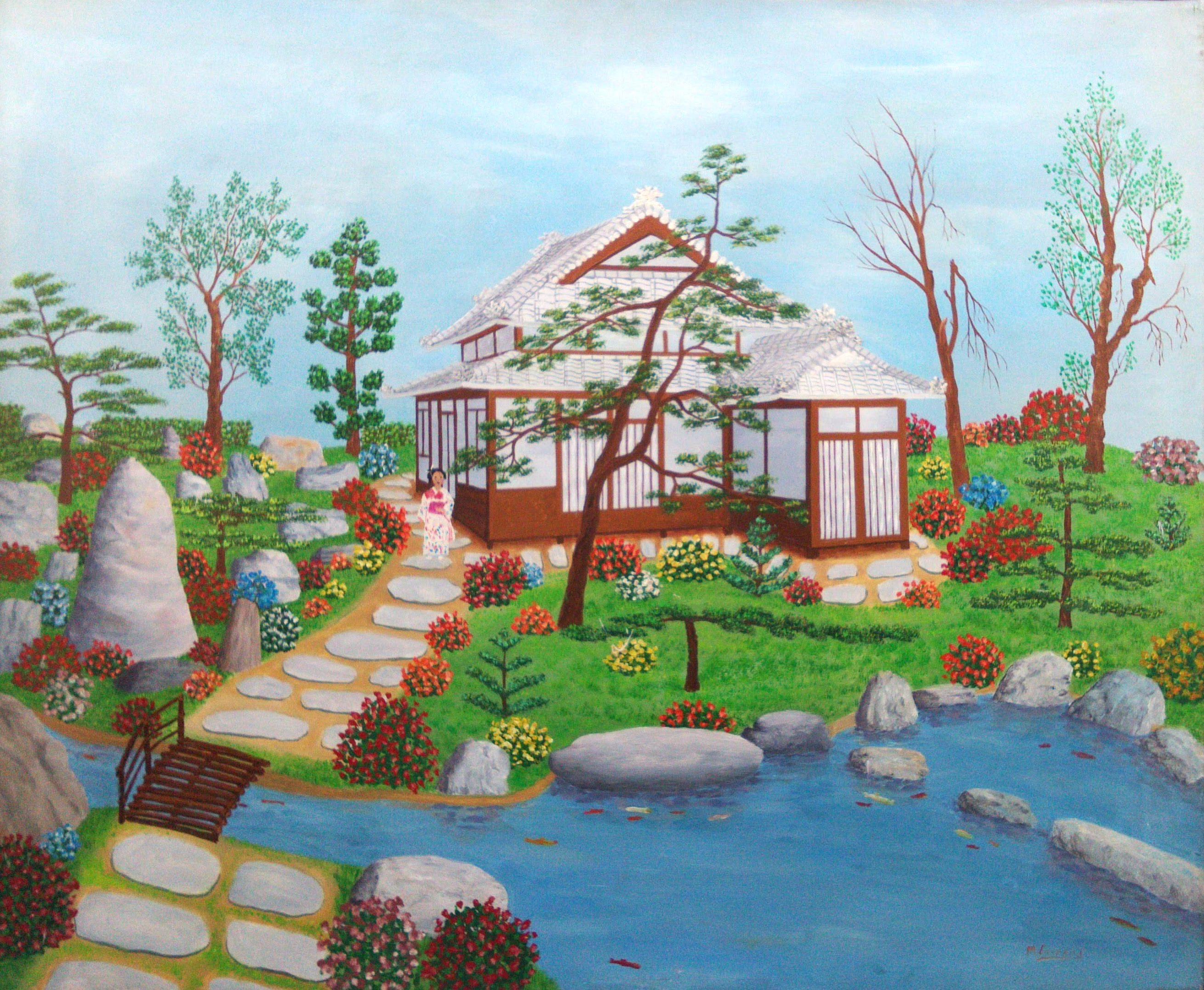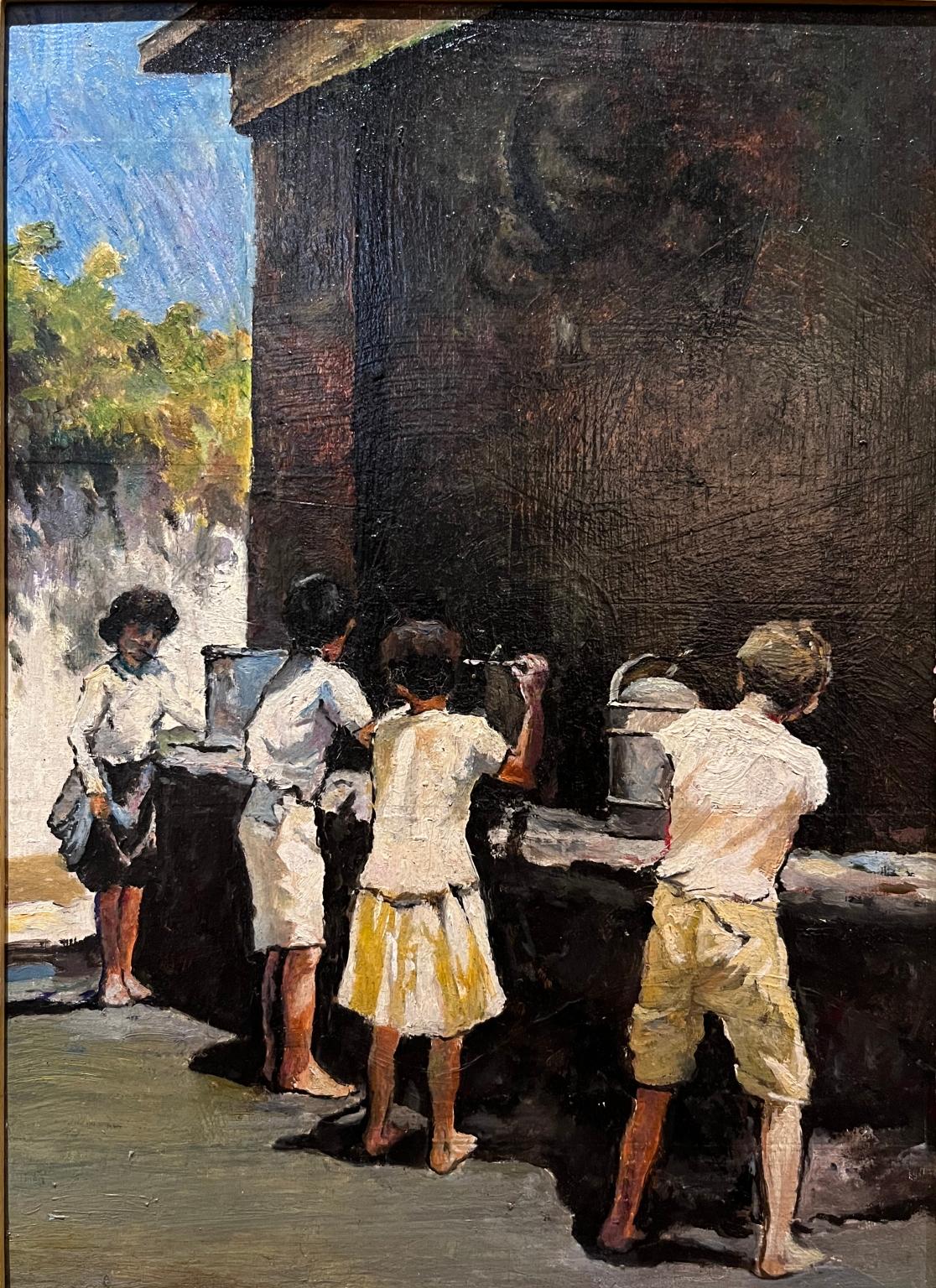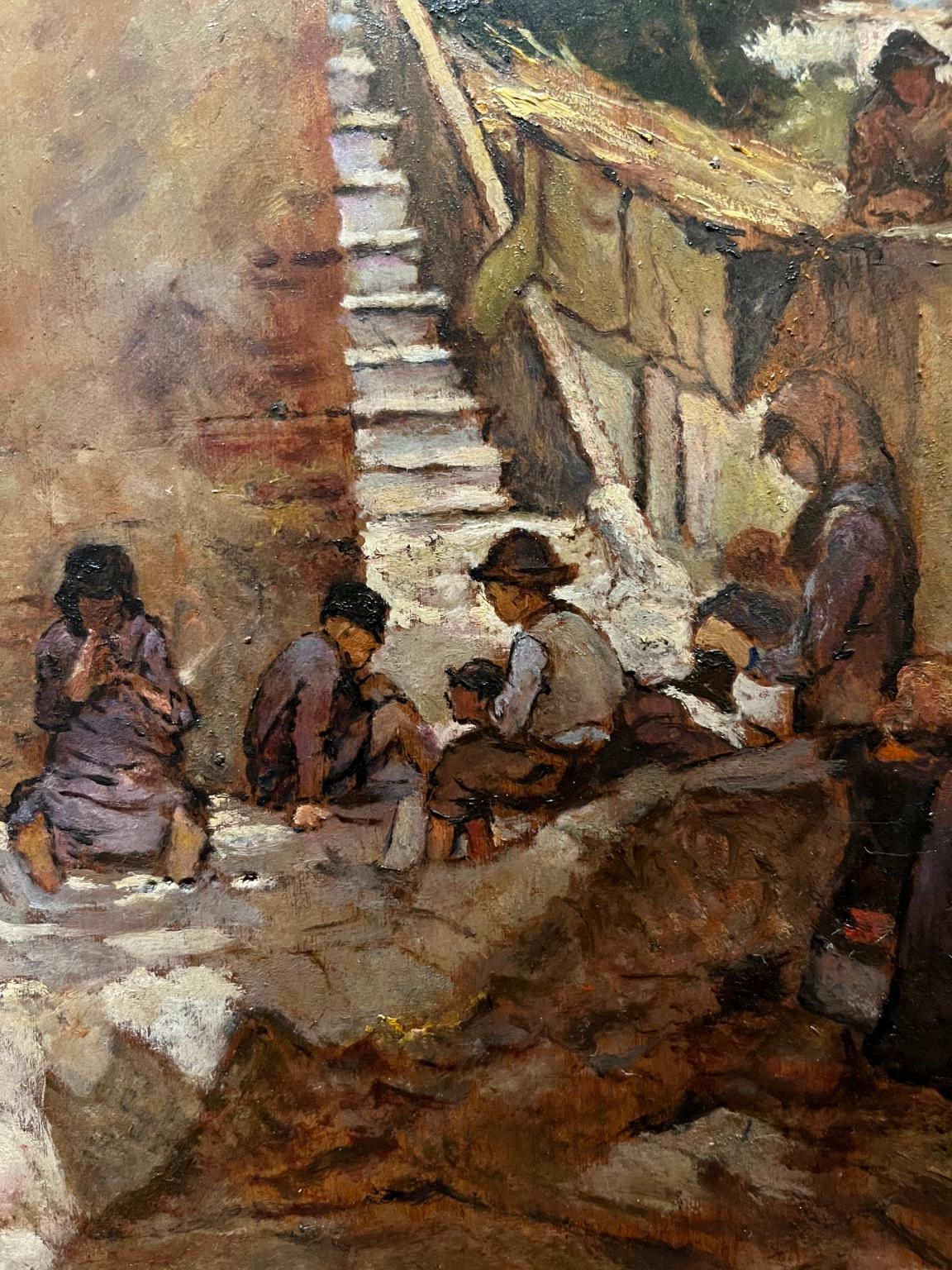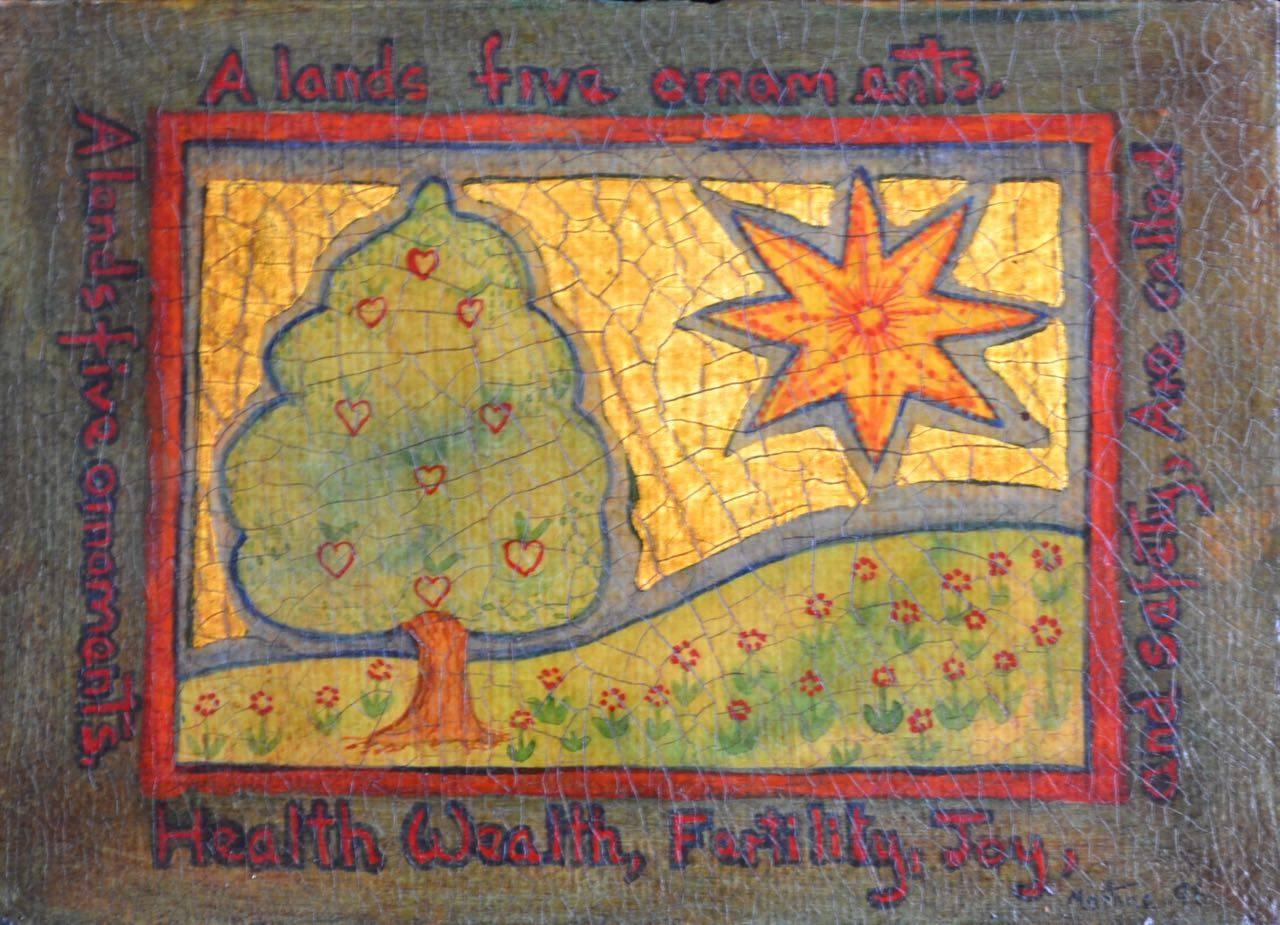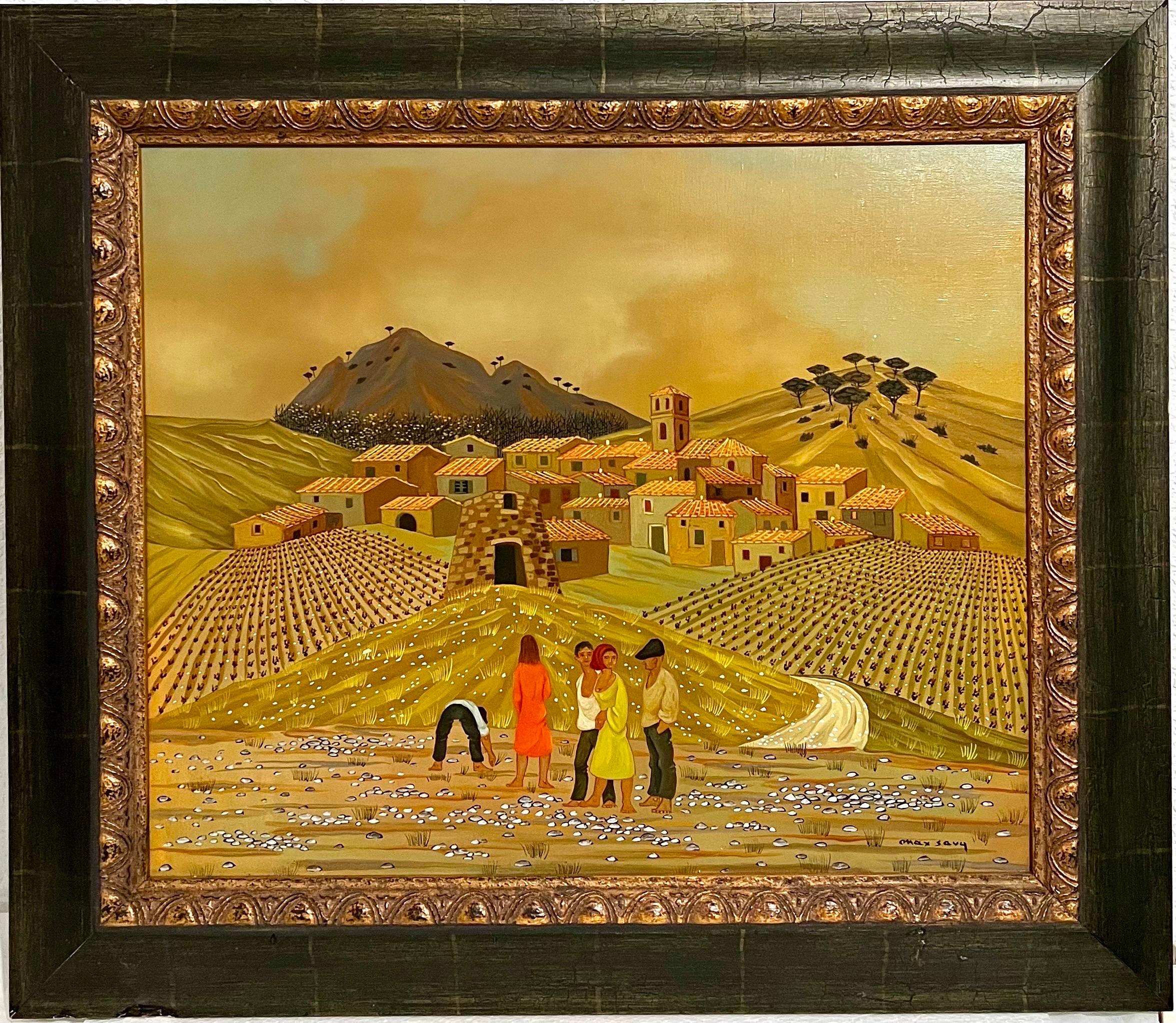Items Similar to Wedding (Authenticated Clementine Hunter Framed Black Folk Art Painting)
Want more images or videos?
Request additional images or videos from the seller
1 of 9
Clementine HunterWedding (Authenticated Clementine Hunter Framed Black Folk Art Painting)1967
1967
About the Item
If you have been watching the prices of Clementine Hunter's work over the past two years, you will know that they have soared to astronomical heights. Attached is the auction record for a sale in New York in January of 2023. Black artists have been in the spotlight lately, and while Clementine Hunter has been a big regional artist for a very long time, she's a national figure now and being added to many museum collections. Institutions and prominent collectors have moved in hard. I was really happy to get this one. At any rate, the first thing to ask about any Clementine is: is it authentic. Yes, there are fakes, and paintings by her son that are mistaken for (or presented as) hers. I won't touch anything by her that hasn't been verified, and this one has been verified by the #1 Clementine expert, Tom Whitehead. Of course it has my own guarantee as well; I have sold many Clementines. You can find fakes at auction houses (many of them outside of the New Orleans area) and other venues that don't ask questions, for a lot less money, but don't be fooled!
Now, about the painting. This one has a clear, wonderful provenance, which is unusual for these. Weddings were a common theme for Hunter, but this one has a specific history. It was gifted to Mr. and Mrs. Merrill by Ann and Jack Brittain in 1967 as a wedding present; then went by descent to the estate of Mary Jane "Cookie" Grace Merrill of Baton Rouge, Louisiana. 18" x 24", slightly larger with frame. I will be including a free copy of the hardcover book (show in photo) by Art Shiver and Tom Whitehead about Clementine (Whitehead is the expert who verified this painting). Proudly presented by Guy Lyman Fine Art, New Orleans, with our firm guarantee of satisfaction.
From AskArt:
Often referred to as “the black Grandma Moses,” Clementine Hunter painted four to five thousand paintings, which were boldly colored images in folk art style of plantation life in Louisiana. Her subjects included everyday activities such as doing laundry and festive events including weddings, dances, and church going. She also did mural painting, and a number of her works had Christian religious subjects.
She was born at Hidden Hill Plantation near Natchitoches, Louisiana, and lived there the remainder of her life pf one-hundred-one years, raising seven children and working in the fields. She attended a local Catholic school, but quit at a young age and never learned to read or write. At age sixteen, she moved to nearby Melrose Plantation, where she worked for many years as a field hand.
Her first male companion and father of two of her children was Charlie Dupree, who died in 1914. Ten years later she married Emanuel Hunter, and moved into the plantation house where she was in charge of the domestic work. Becoming associated with the plantation mistress, Ms. Cammie Henry, changed Hunter’s life. Henry, was an archivist and artist who actively encouraged the arts. She opened her home to artists and authors who needed a quiet place to work. It was at Melrose that Hunter first began her production of hand made quilts, dolls, and lace curtains.
Meeting artist friends of Ms. Henry, Hunter met many people in the art world and was especially influenced and promoted by Francois Mignon, who was an artist-in-residence at the plantation. In 1946, under his direction, she did her first work, a plantation baptism scene, from a few partially used tubes of oil paint on a window shade that he provided. Another supporter at that time was James Register, also an artist-in- residence, and he obtained a Julius Rosenwald Foundation Grant for her. He encouraged her to do abstract art, which she did while letting him choose the titles.
But she preferred the folk art style. From that time, she was prolific, and created over four-thousand scenes of plantation life on whatever materials were available from scrap wood to paper bags. She thinned her oil paint so much it resembled watercolor. She sold many of her first works for a dime or quarter to pay for her husband’s medical treatment.
Legacy and honors:
One of the more well-known displays of Hunter’s artwork is located in a food storage building called “African House” on the grounds of Melrose Plantation. (African House is often referred to as slave quarters, however the building was built for, and always used for food storage.) The walls are covered in a mural Hunter painted in 1955, depicting scenes of Cane River plantation life. When she completed the mural, a local newspaper ran the headline: “A 20th Century Woman of Color Finishes a Story Begun 200 Years Ago by an 18th Century Congo-Born Slave Girl, Marie-Therese, the original grantee of Melrose Plantation.”
The cafe and snack bar at the Alexandria Museum of Art is named for Hunter.
She was the first African-American artist to have a solo exhibition at the Delgado Museum (now the New Orleans Museum of Art). She achieved significant recognition during her lifetime, including an invitation to the White House from U.S. President Jimmy Carter and letters from both President Ronald Reagan and U.S. Senator J. Bennett Johnston, Jr..
Radcliffe College included Hunter in its Black Women Oral History Project, published in 1980. Northwestern State University of Louisiana granted her an honorary Doctor of Fine Arts degree in 1986. The following year, Louisiana governor Edwin Edwards designated her as an honorary colonel, a state honor, and aide-de-camp.
Hunter has been the subject of biographies and artist studies, and inspired other works of art. In 2013 composer Robert Wilson presented a new opera about her: Zinnias: the Life of Clementine Hunter, at Montclair State University in New Jersey.
Sources:
Peter Hastings Falk, Editor, Who Was Who in American Art, Volume II
Chuck and Jan Rosenak, Museum of American Art Folk Art Encyclopedia
“Clementine Hunter,” Wikipedia, Web, Mar. 2016
Alice Rae Yelen, “Passionate Visions,” American Art Review, February, 1995
- Creator:Clementine Hunter
- Creation Year:1967
- Dimensions:Height: 18 in (45.72 cm)Width: 24 in (60.96 cm)
- Medium:
- Movement & Style:
- Period:
- Condition:
- Gallery Location:New Orleans, LA
- Reference Number:1stDibs: LU99439363492
About the Seller
5.0
Vetted Seller
These experienced sellers undergo a comprehensive evaluation by our team of in-house experts.
Established in 2008
1stDibs seller since 2018
269 sales on 1stDibs
Typical response time: 9 hours
- ShippingRetrieving quote...Ships From: New Orleans, LA
- Return PolicyA return for this item may be initiated within 14 days of delivery.
More From This SellerView All
- "Le Dompteur de Pigeons" (ex. Christie's) - Large Antique Impressionist PaintingBy Georges Jules Victor ClairinLocated in New Orleans, LAA large, spectacular, absolutely splendid painting by noted French painter Georges Clairin, which appeared for auction at Christie's in 2004 (see photo...Category
Late 19th Century Impressionist Landscape Paintings
MaterialsOil
- The Kindling Gatherers, 1890 (knighted Royal Academy member, Antique Landscape)By Alfred EastLocated in New Orleans, LASir Alfred East was both a full member of the Royal Academy and president of the Royal Society of British Artists, so his pedigree is impeccable. He be...Category
Late 19th Century Impressionist Landscape Paintings
MaterialsOil
- A Path Through the Woods (Impressionist Oil on Canvas)Located in New Orleans, LAA gentle Impressionist scene of a pretty young woman on a trail in the forest in dappled light. Written on the back is "M. Graves 48" but the canvas and stretcher seem a lot older th...Category
Early 20th Century Impressionist Landscape Paintings
MaterialsOil
- "Shoes" - Late 20th Century City Figure PaintingLocated in New Orleans, LAIn addition to having his work in museums and fine corporate collections, Alabama artist Donny Finley showed for years at prestigious Bryant Galleries on ...Category
Late 20th Century American Realist Landscape Paintings
MaterialsOil
- Gunner Dongieux "All Quiet on the Western Front" - Contemporary Collage PaintingBy Gunner DongieuxLocated in New Orleans, LAA large and endlessly entertaining painting combining acrylic and collage, by important emerging artist Gunner Dongieux (New Orleans, San Francisco). Part of the Breakup Series, whic...Category
2010s Pop Art Figurative Paintings
MaterialsMixed Media, Acrylic
- "New Orleans Streetcar" - Large Contemporary Mixed Media Collage PaintingBy Gunner DongieuxLocated in New Orleans, LAAnyone who has visited New Orleans knows it's crammed with characters of every description. Important emerging artist Gunner Dongieux (New Orleans, San Francisco) grew up in the Big Easy, and here has captured the eccentricity which characterizes the city. You can see all sorts of characters here - even Fred Flintstone...Category
2010s Pop Art Figurative Paintings
MaterialsMixed Media, Acrylic
You May Also Like
- Japan Japanese Garden by French naive outsider folk art primitive artist, 1975Located in Norwich, GBA perfect painting for lovers of Japan and those of primitive/naive outside art. It is a work by an internatoanlly noted extraordinary artist with an extraordinary life. Maurice LOIRAND (1922-2008) is born into a working class family in Brittany, near the Atlantic coast coast in France. He starts working as a skilled labourer in the shipyards aged 15. Aged 20, when the Nazis start to occupy the country, he joins the Resistance movement, where he meets and befriends thinkers, painters and poets. He is thus introduced to an artistic and intellectual universe far removed from the world of his origins. Loirand finds himself drawn to art, and soon dedicates all his free time to learn how to paint. Completely self taught, he soon begins to exhibit his pictures alongside high level artists. He moves to Paris in the 1950s, and - although still working as a technician - paints all night. He finally becomes a full time artist in 1968. International travel and a multitude of exhibitions follow. He exhibits in Brazil, Argentina, and with Jean Tiroche Gallery in New York, among others. His work is now shown alongside works by Leger, Matisse and Picasso. The Collector's Guild New York Ltd commissions Maurice Loirand for several works of lithographic art. Loirand discovers Japan in the early 1970s, and decides to stay for 18 years. He marries Kazué SHIMOTORI, a Japanese poet...Category
1970s Outsider Art Figurative Paintings
MaterialsOil, Canvas
- Tuscan Figurative Genre Scene painting 20th century oil on canvasLocated in Florence, ITThe artist of this painting is unknown but it can be ascribe to a Tuscan movement of the 20th century inspired by 19th century art like Verismo (as we can deduce by the clean and not...Category
20th Century Folk Art Figurative Paintings
MaterialsCanvas, Oil
- Tuscan Figurative Genre Scene painting 20th century oil on canvasLocated in Florence, ITThe artist of this painting is unknown but it can be ascribe to a Tuscan movement of the 20th century inspired by 19th century art like Verismo (as we can deduce by the clean and not...Category
20th Century Folk Art Figurative Paintings
MaterialsCanvas, Oil
- Contemporary Atmospheric Black & White Monochrome Landscape Wilderness PaintingBy Mark ThompsonLocated in Preston, GBContemporary Atmospheric Black & White Monochrome Landscape Wilderness Painting by 20th Century Artist. Mark Thompson is a seasoned professional pa...Category
Early 2000s Outsider Art Landscape Paintings
MaterialsCanvas, Paint, Cotton Canvas, Oil
- A Lands Five Ornaments. Contemporary PaintingBy Martine BarnardLocated in Brecon, PowysA Lands Five Ornaments, Health, Wealth, Fertility, Joy and Safety Oil, gold leaf on arches paper with a crackled varnish finish Image 5" x 7" Mounted 10" x 12" signed and dated low...Category
1990s Outsider Art Figurative Paintings
MaterialsGold Leaf
- French Folk Art Naive Oil Painting Workers in Vineyard, Les Vignes aux GitansLocated in Surfside, FLMax Savy Oil on canvas painting depicting a village scene with winemakers in a vineyard by artist Max Savy (French, b. 1918). Signed in the lower right. Frame measures 24.5 inches x 28 inches. canvas is 18 X 22 inches., Perfect for a wine cellar or cave. Max Savy (French, 1918-2010) painted scenes of everyday life in the French Corbieres region, which garnered much success during his life. Though the artist remained silent about his early life, it's known his father instilled in him a belief in the humanist socialism philosophy of French Socialist Party leader, Jean Jaures. In 1938, at age 20, he moved to Carcassonne to attend school. There, he married and settled into a teaching position, joining the French Resistance during World War II and earning the Cross of the Combatant. After the war, he created the work for which he is most admired. Max Savy paintings are part of France's heritage collection, and the artist became a knight of the National Order of Merit in 1973. Max Savy's paintings and artworks include scenes of peasants in the fields. Max Savy was active/lived in France. Max Savy is known for folk art style painting of village architecture, vintners, figures in landscape, wine makers, marine scenes. His work is similar in style to the naive, folk art paintings of Michel Delacroix and Fanch Ledan. This is quite similar to a work I had titled "Les Vignes Aux Gitans" (the gypsy grape vines) So i assume this is also a vineyard painting...Category
Mid-20th Century Folk Art Landscape Paintings
MaterialsCanvas, Oil
Recently Viewed
View AllMore Ways To Browse
Vintage Art Materials
Vintage Black Folk Art
Hunter Century
Retro Art Auction
Retro Art Murals
Vintage Wedding Art
Vintage Frames Lot
Lot Of Vintage Frames
Vintage Hunter
Vintage Hunters
Black Folk Art Painting
Retro Religious Art
Vintage Camping Art
Thin Wood Frame
Dior 1967
Food Vintage Art
Wedding Shors
Vintage Bar Wall Art
